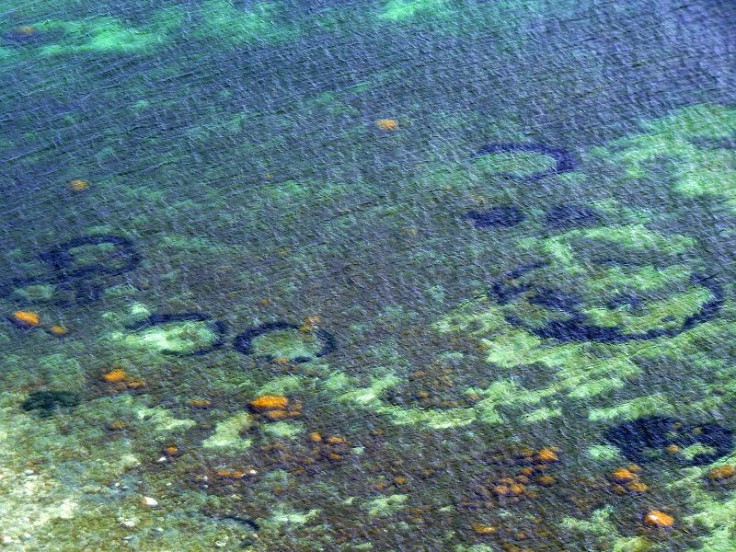Denmark ‘Fairy Rings’ Explained? Mysterious Baltic Sea Circles Not As ‘Alien’ As People Think

While Earth is full of little mysteries, here’s one unexplained phenomenon we can cross off the list: Biologists in Denmark have come up with a scientific reason for the strange “fairy rings” found in the shallow waters of the Baltic Sea.
The dark circles, first photographed in 2008 by puzzled tourists, caught the imagination of visitors and Internet users alike, who came up with some wild theories about the origin of the rings. Were they WWII bomb craters? Indentations left by alien spaceships?
It turns out the seemingly extraterrestrial phenomenon has rather unremarkable origins. A team of researchers from the University of Southern Denmark and the University of Copenhagen have identified a certain type of marine plant, called eelgrass, as the cause of Denmark’s mysterious “fairy rings.”
"It has nothing to do with either bomb craters or landing marks for aliens,” biologists Marianne Holmer from University of Southern Denmark and Jens Borum from University of Copenhagen said in a statement. “Nor with fairies, who in the old days got the blame for similar phenomena on land, the fairy rings in lawns being a well-known example.”
Researchers say eelgrass grows in large circles, expanding radially outward from the center. The grass on the outside of the circle is the newest and strongest of the eelgrass, and the grass in the center is weaker and older.
In their study, published in the journal Marine Biology, scientists explain how toxic mud containing sulfide, a substance poisonous to eelgrass, gets caught in the plants leaves. As it accumulates, it begins to choke and kill the eelgrass. The grass in the center, being the weakest, dies first, leaving a rim of grass around the outer edge of the eelgrass patch.
"Most mud gets washed away from the barren, chalky seabed, but like trees trap soil on an exposed hillside, eelgrass plants trap the mud,” the researchers noted. “And therefore there will be a high concentration of sulfide-rich mud among the eelgrass plants.”
Fairy rings aren’t the only secrets discovered on the bottom of the Baltic Sea. In 2011, divers found what came to be known as the "Baltic Sea anomaly,” an unusual rock formation measuring over 200 feet in diameter and sticking up from the bottom of the lake.
Scientists say that what looks like the stone lid of a massive underwater lair is probably just a natural geological formation. That hasn’t stopped some people from speculating about the origin of the Baltic Sea anomaly, including whether it could have belonged to the Nazis.
© Copyright IBTimes 2024. All rights reserved.












